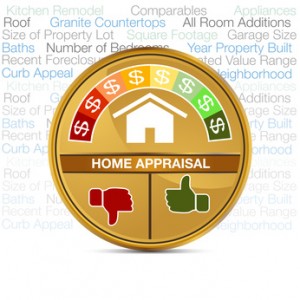2015 Appraisal Changes
 On January 26, 2015, Fannie Mae will introduce an appraisal risk score, flags, and new messages in UCDP from Collateral UnderwriterTM (CUTM), a new proprietary appraisal risk assessment application developed by Fannie Mae to support proactive management of appraisal quality. Also on January 26, the severity level for 21 Fannie Mae proprietary appraisal messages that relate to eligibility violations will be modified. The severity level will change from a warning message that is automatically overridden to a hard stop that will require a lender action (a manual override or the submission of a corrected appraisal) to obtain a “Successful” submission status in the UCDP. On December 13, 2014, numerous other Fannie Mae proprietary appraisal messages will be retired in order to focus lenders’ attention on eligibility and compliance messages, and to better align with appraisal policy. In preparation for the upcoming UCDP changes, lenders should contact their vendors for additional information on their implementation plans, timing, and testing availability.
On January 26, 2015, Fannie Mae will introduce an appraisal risk score, flags, and new messages in UCDP from Collateral UnderwriterTM (CUTM), a new proprietary appraisal risk assessment application developed by Fannie Mae to support proactive management of appraisal quality. Also on January 26, the severity level for 21 Fannie Mae proprietary appraisal messages that relate to eligibility violations will be modified. The severity level will change from a warning message that is automatically overridden to a hard stop that will require a lender action (a manual override or the submission of a corrected appraisal) to obtain a “Successful” submission status in the UCDP. On December 13, 2014, numerous other Fannie Mae proprietary appraisal messages will be retired in order to focus lenders’ attention on eligibility and compliance messages, and to better align with appraisal policy. In preparation for the upcoming UCDP changes, lenders should contact their vendors for additional information on their implementation plans, timing, and testing availability.
New Collateral Underwriter Risk Score, Flags, and Messages Beginning January 26, CU will perform an automated risk assessment of appraisals submitted to Fannie Mae through UCDP and will return a CU risk score, flags, and messages on the Fannie Mae Findings tab in UCDP, in the Submission Summary Report (SSR), and via direct integration. Lenders may use the CU risk score to segment appraisals by risk profile, resulting in more efficient resource allocation, workflow management, and collateral risk management processes. The score will be provided in message ID FNM1000 and will be based on CU’s automated assessment on a scale of 1.0 (lowest risk) to 5.0 (highest risk). If a CU risk score cannot be generated on a 1004 or 1073 appraisal form, a “999” will be returned and a message in the FNM09XX series will provide more specific information about why the appraisal could not be scored. Some “999” messages can be resolved (for example, if there is a simple data entry error). CU risk scores and messages will not be returned for other form types.
